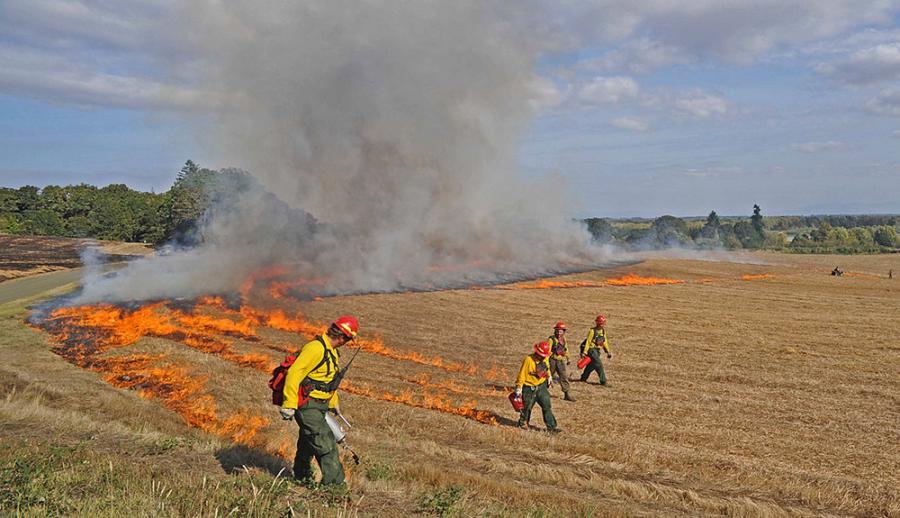
The Forest Service. The Bureau of Land Management. The Nuclear Regulatory Commission. The Department of Defense. From managing the nation’s forests and rangelands to our military facilities and nuclear plants, these and other U.S. federal agencies take actions that change the physical landscape as well as the environment’s capacity to contribute to human society—and on a large scale.
Clean air and drinking water, erosion and flood control, and outdoor recreation are just a few examples of “ecosystem services,” or benefits that people receive from natural systems. And while it can be difficult to pin a specific dollar value on such services, new data, methods, and expertise are making it increasingly possible to do just that.
Yet, federal agencies have not consistently incorporated measures of ecosystem services into their decision making processes.
Which is why new policy guidance released earlier this month by the White House is welcome (and exciting!) news. The guidance directs federal agencies to begin incorporating ecosystem services into their planning and decision making. Specifically, it:
“… directs agencies to develop and institutionalize policies to promote consideration of ecosystem services, where appropriate and practicable, in planning, investment, and regulatory contexts. It also establishes a process for the federal government to develop a more detailed guidance on integrating ecosystem service assessments into relevant programs and projects to help maintain ecosystem and community resilience, sustainable use of natural resources, and the recreational value of the Nation’s unique landscapes.”
The new guidance isn’t a win just for the environment—it’s decisive progress for human health and economic well-being, too.
“An ecosystem services approach to decision making can help agencies link natural resource management choices to the things people care about in an understandable and analytically robust manner,” said Jim Boyd, Director of Social Science & Policy at SESYNC and Senior Fellow and Director of the Center for the Management of Ecological Wealth at Resources for the Future.
For agency staff left wondering exactly how to make this happen, the National Ecosystem Services Partnership (NESP) has worked for three years with agencies, academics, and practitioners to develop the Federal Resource Management and Ecosystem Services Guidebook, an online resource that provides a framework for incorporating ecosystem services into decision making and highlighting relevant efforts under way by federal agencies. NESP also produced a companion Best Practices for Integrating Ecosystem Services into Federal Decision Making report, released earlier this year.
The resources provide much-needed clarity for how to design ecosystem services assessments that meet minimum standards of scientifically-rigorous assessments even when time, resources, or capacity are limiting.
The NESP guidebook and best practices report were supported in part by the National Socio-Environmental Synthesis Center (SESYNC) under funding received from the National Science Foundation DBI-1052875.
[1] Tamara Dickinson, Timothy Male, and Ali Zaidi: “Incorporating Natural Infrastructure and Ecosystem Services in Federal Decision-Making.” The White House Blog.
Recommended Reading
Ecosystem services and resource management: Institutional issues, challenges, and opportunities in the public sector
A 2015 study published in the journal Ecological Economics by Lynn Scarlett, The Nature Conservancy, and Jim Boyd, SESYNC and Resources for the Future.
Principles to Guide Assessments of Ecosystem Service Values
A 2013 document arising from the Ecosystem Services Valuation Workshop held July 8–9, 2013, at Portland State University, an event sponsored by Portland State University’s Institute for Sustainable Solutions, the Cascadia Ecosystem Services Partnership, and Defenders of Wildlife.
Sustaining Environmental Capital: Protecting Society and the Economy
A 2011 Report to the President from the President’s Council of Advisors on Science and Technology Working Group on Biodiversity Preservation and Ecosystem Sustainability.
U.S. Federal Government Sends Agencies to Bat — For Nature and People
A 2015 blog published in Cool Green Science by Heather Tallis, The Nature Conservancy, and Lydia Olander, Duke University.
The National Socio-Environmental Synthesis Center is a research center dedicated to accelerating scientific discovery at the interface of human and ecological systems. Visit us online at www.sesync.org and follow us on Twitter @SESYNC.